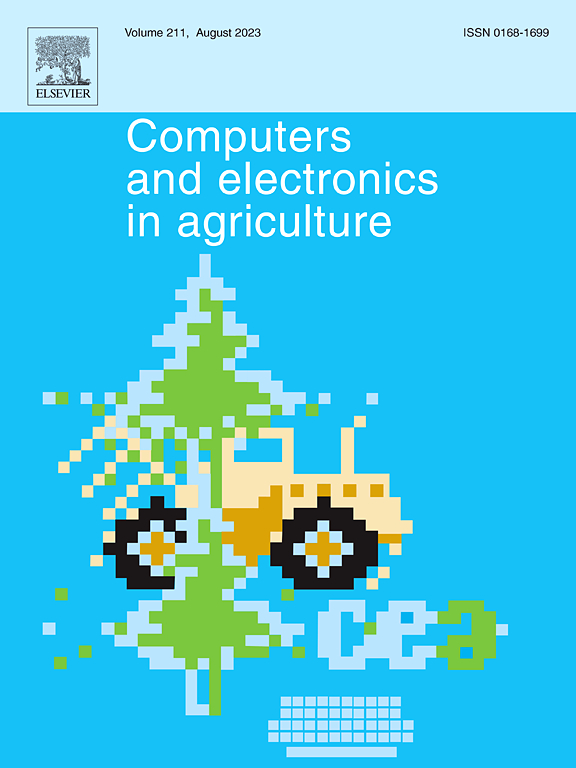加强传粉者保护:通过物体识别监测蜜蜂
IF 7.7
1区 农林科学
Q1 AGRICULTURE, MULTIDISCIPLINARY
引用次数: 0
摘要
在气候快速变化及其对粮食生产产生不利影响的时代,监测传粉媒介保护的技术干预对于全球粮食安全的环境监测和保护至关重要。人类物种的生存依赖于传粉媒介的保护。本文探讨了使用计算机视觉和对象识别来自动跟踪和报告图像中的蜜蜂行为。从视频流中提取了包含蜜蜂的9664幅图像的新数据集,并用边界框进行了注释。在训练集、验证集和测试集(分别为6722张、1915张和997张)上,基于coco的YOLO模型微调方法的结果表明,在识别精度方面,YOLOv5 m是最有效的方法。然而,YOLOv5s被证明是实时蜜蜂检测的最佳选择,平均处理和推理时间为5.1 ms /视频帧,但能力略低。经过训练的模型随后被打包在一个可解释的人工智能界面中,该界面将检测事件转换为带有时间戳的报告和图表,目的是方便非技术用户(如养蜂业的专家利益相关者)使用,为负责任的消费和生产提供信息。本文章由计算机程序翻译,如有差异,请以英文原文为准。
Enhancing pollinator conservation: Monitoring of bees through object recognition
In an era of rapid climate change and its adverse effects on food production, technological intervention to monitor pollinator conservation is of paramount importance for environmental monitoring and conservation for global food security. The survival of the human species depends on the conservation of pollinators. This article explores the use of Computer Vision and Object Recognition to autonomously track and report bee behaviour from images. A novel dataset of 9664 images containing bees is extracted from video streams and annotated with bounding boxes. With training, validation and testing sets (6722, 1915, and 997 images, respectively), the results of the COCO-based YOLO model fine-tuning approaches show that YOLOv5 m is the most effective approach in terms of recognition accuracy. However, YOLOv5s was shown to be the most optimal for real-time bee detection with an average processing and inference time of 5.1 ms per video frame at the cost of slightly lower ability. The trained model is then packaged within an explainable AI interface, which converts detection events into timestamped reports and charts, with the aim of facilitating use by non-technical users such as expert stakeholders from the apiculture industry towards informing responsible consumption and production.
求助全文
通过发布文献求助,成功后即可免费获取论文全文。
去求助
来源期刊

Computers and Electronics in Agriculture
工程技术-计算机:跨学科应用
CiteScore
15.30
自引率
14.50%
发文量
800
审稿时长
62 days
期刊介绍:
Computers and Electronics in Agriculture provides international coverage of advancements in computer hardware, software, electronic instrumentation, and control systems applied to agricultural challenges. Encompassing agronomy, horticulture, forestry, aquaculture, and animal farming, the journal publishes original papers, reviews, and applications notes. It explores the use of computers and electronics in plant or animal agricultural production, covering topics like agricultural soils, water, pests, controlled environments, and waste. The scope extends to on-farm post-harvest operations and relevant technologies, including artificial intelligence, sensors, machine vision, robotics, networking, and simulation modeling. Its companion journal, Smart Agricultural Technology, continues the focus on smart applications in production agriculture.
 求助内容:
求助内容: 应助结果提醒方式:
应助结果提醒方式:


